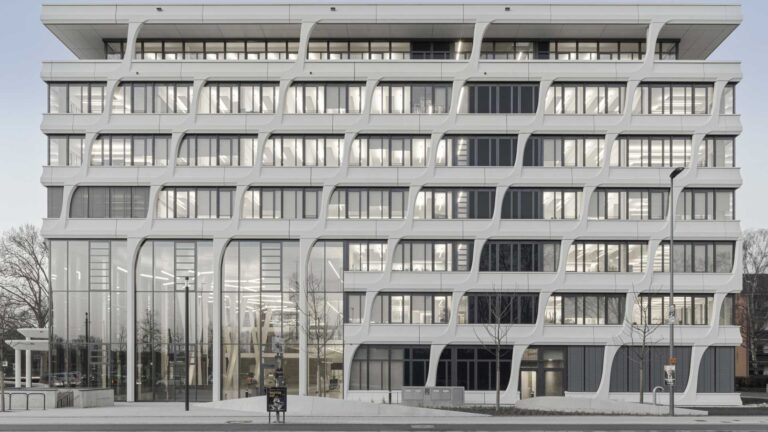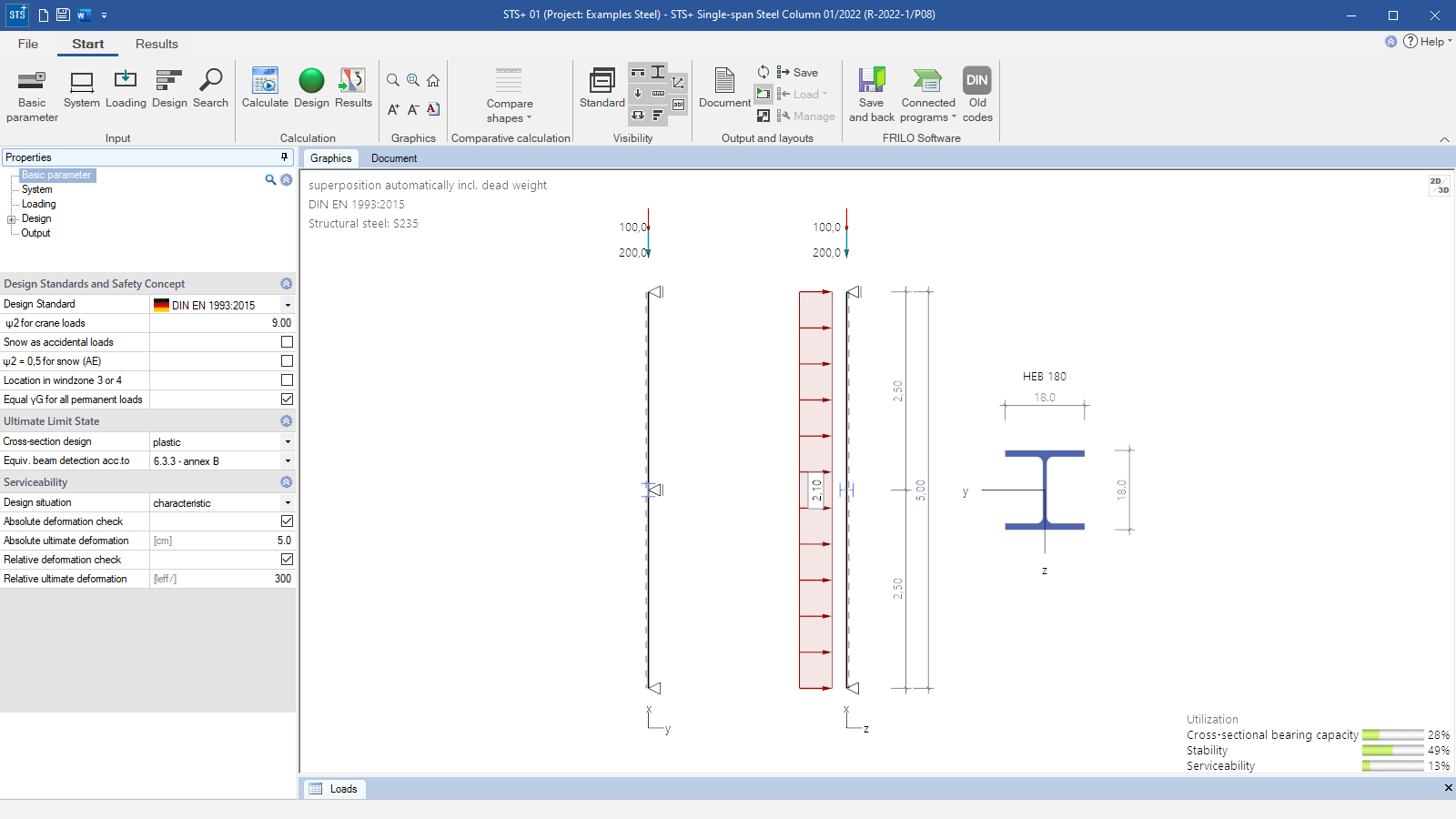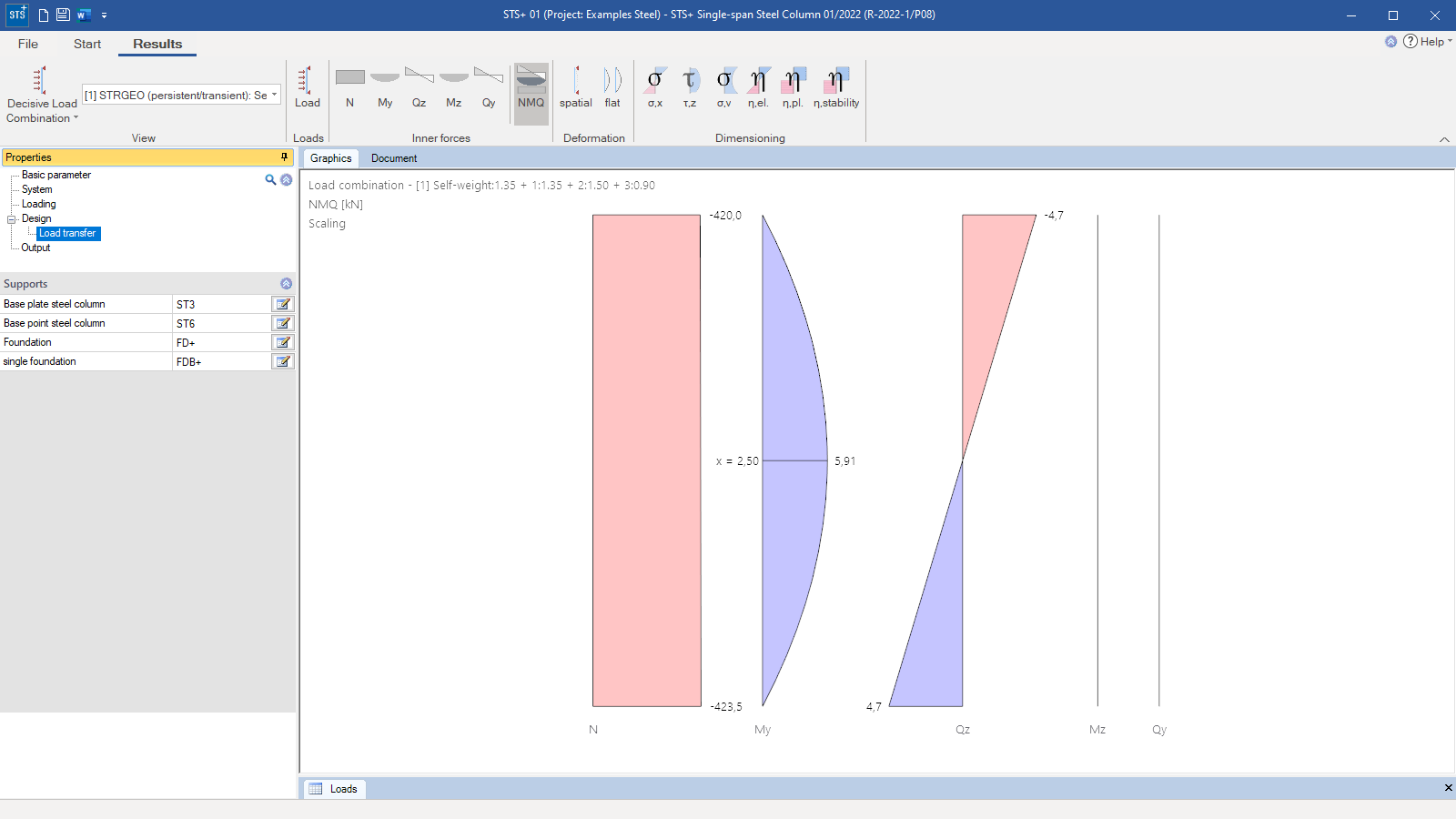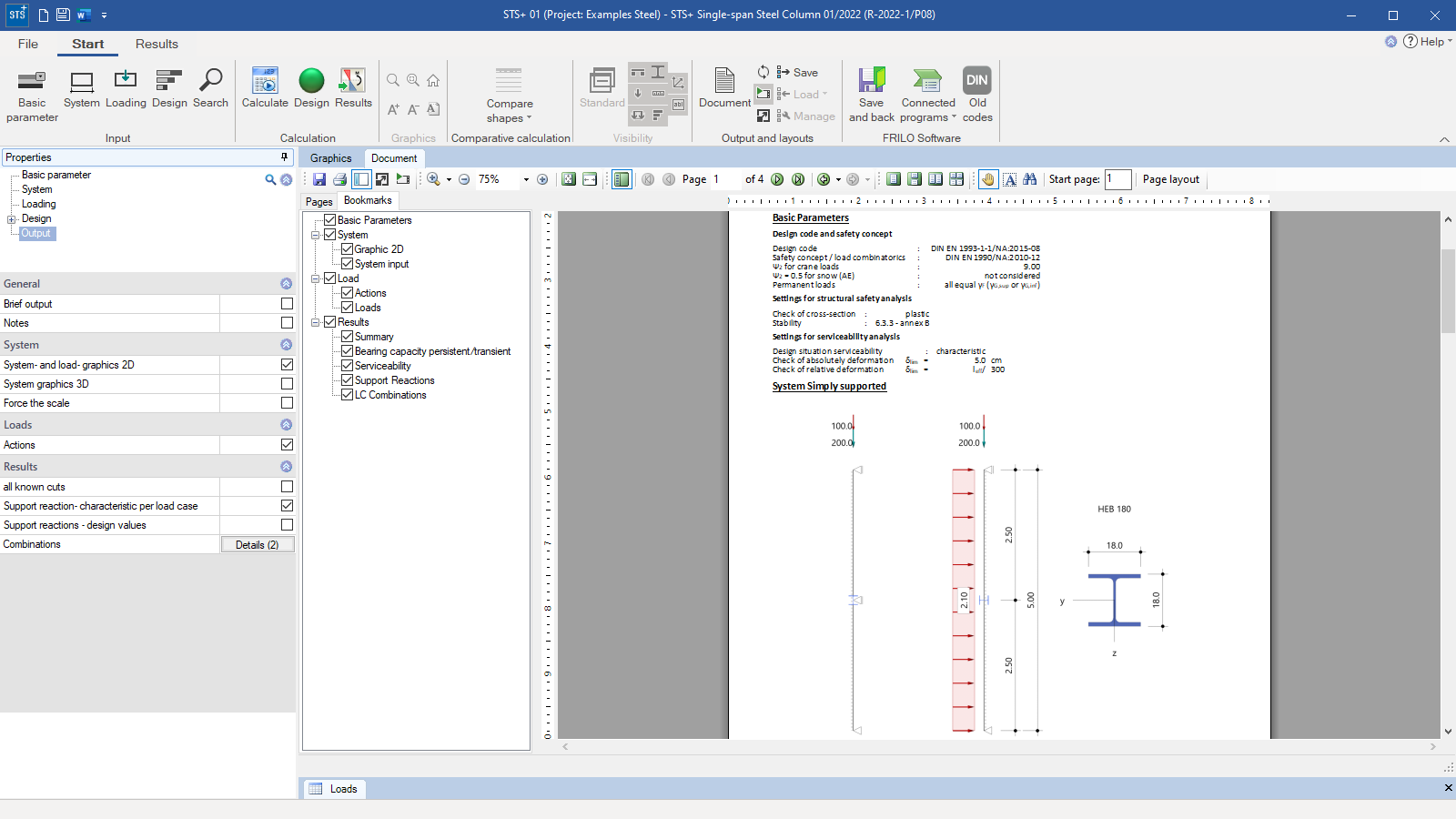
Single-span Steel Column
STS+
The STS+ program is used to perform structural safety verifications in accordance with the equivalent member method (model column method) for centrically and eccentrically loaded columns made of sectional steel. The verifications are performed as per Eurocode 3, the regulations of the implemented national annexes are taken into account.
Discover now more programs from the section Steel!
SHOW MOREMaterial
- Structural steel: S235, S275, S355, S450
- Annealed steel (S275N – S460N)
- Thermo-steel (S275M – S460M)
- Weathering steel (S235W – S355W)
- High-temperature steel (S460Q – S460QL1)
- Hollow section, hot-finished (S235H – S355H)
- Hollow section, hot-finished, fine-grain (S275NH – S460NH)
- User-defined steel
Structural System
Available systems:
- Hinged column
- Cantilever column
- Restrained on both sides
- Restrained on bottom and pinned on top
- Restrained on top and pinned on bottom
- General column (the support conditions can vary in the directions of the main axes)
Cross-sections:
- I-sections, circular hollow sections, rectangular/square hollow sections available as standard steel shapes
- I-sections, circular hollow sections, rectangular/square hollow sections definable by the user
Supports:
- Top and bottom restraints in accordance with the selected structural system
- Additional definition of lateral intermediate supports (continuous, in the middle of the span, in the third points, in the quarter points, at a distance x)
Loads
- Automatic consideration of the self-weight
- Vertical loads, horizontal loads and moments
- Head load (Q/N), concentrated load (Q/N), concentrated moment, uniform linear load (Q), triangular load (Q), trapezoidal loads (Q)
- Horizontal equivalent load from appended hinged column with cantilever columns
- Automatic generation of the load case combinations
General
The program maps automatically all necessary combinations of actions in accordance with the safety concept set forth in Eurocode 0.
Structural safety
Either the elastic or plastic cross-sectional resistance is verified. In this verification, the internal forces are determined in a first-order analysis. Furthermore, the system’s load-bearing capacity is verified based on the equivalent member method either in accordance with paragraph 6.3.3 Annex A or B or with paragraph 6.3.4.
Serviceability
Within the framework of the serviceability verification, the displacements are determined for the main axes separately for each direction; in addition, the resulting displacement is also determined. Deformations are calculated in a first-order analysis. The user must specify the design situation that should be used for the serviceability verification.
Document file formats
- Word
- Printer
Output
Output profile:
- pre-set brief output
- user-defined scope
Result graphs:
- Internal forces: N, My, Qz, Mz, Qy, NMQ
- Deformations: vy, vz
- Stresses: σ,x ; τ,z ; σ,v
- Utilisation Eta: n,el ; n,pl ; n,stability
Transfer options
- Steel Column Base ST3
- Pocketed Steel Column Base ST6
- Isolated Foundation FD+
- Block Foundation FDB+
- Lateral Torsional Buckling Analysis BTII+
Import options
- FRILO XML
- ASCII-file
- ASCII-file (with selectable options)
- SEMA
Export options
- Word
- FRILO XML
- ASCII-file
- SEMA
Steel construction
- DIN EN 1993
- ÖNORM EN 1993
- BS EN 1993
- PN EN 1993
Support resources
News

Merger of FRILO Software and DC Software with ALLPLAN successfully completed
The merger of FRILO Software GmbH and DC-Software Doster & Christmann GmbH with the ALLPLAN Group has been legally completed since July 1, 2024.

Corporate headquarters as reinforced concrete skeleton structure
With the construction of a new corporate headquarters, Heidelberg Materials has demonstrated the remarkable range of reinforced concrete as an attractive building material. FRILO and Allplan were used by the structural engineers.




